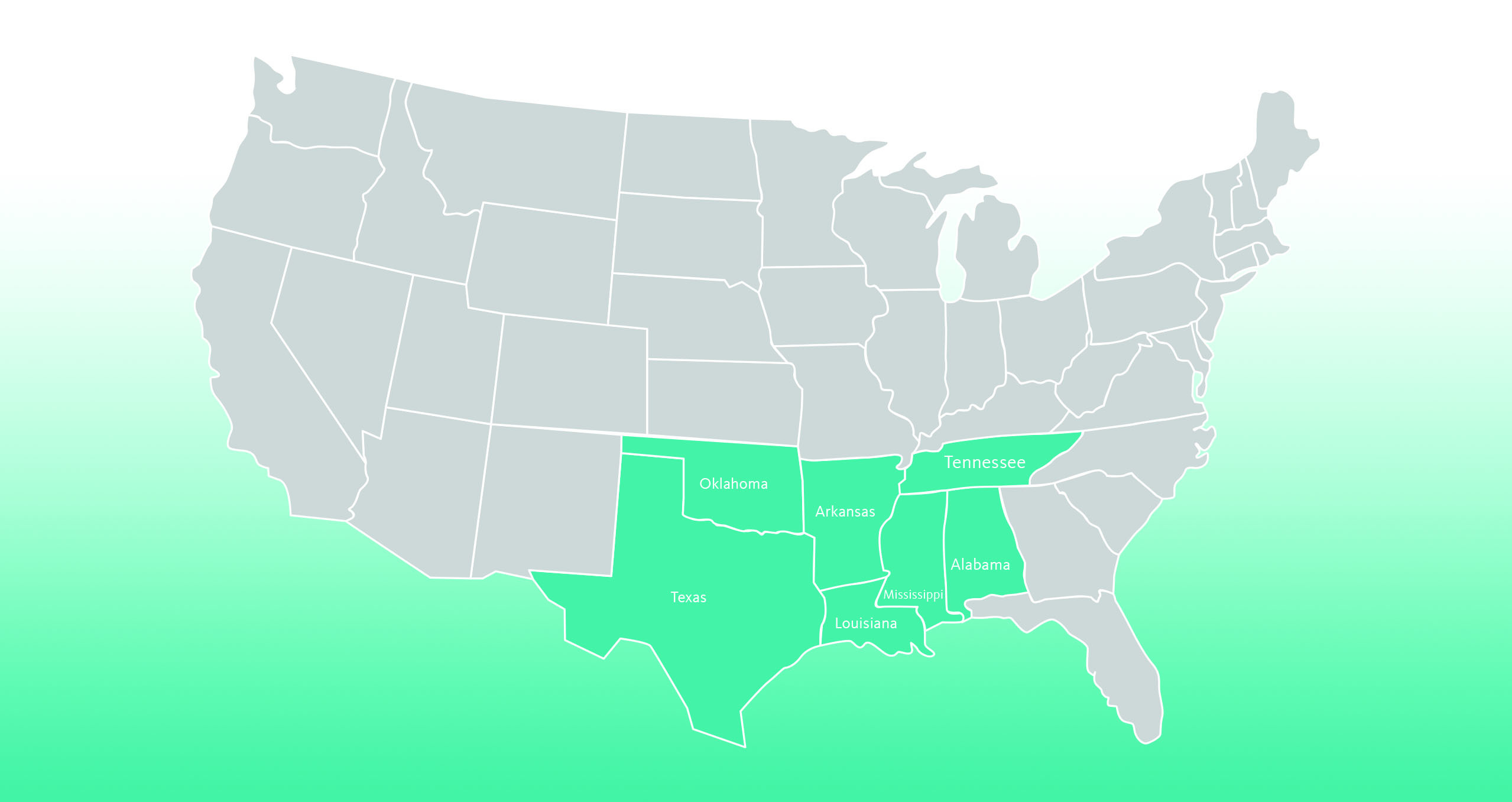Southern State Revolving Fund Analysis and Advocacy Project
The Southern State Revolving Fund (SRF) Analysis and Advocacy Project, produced by PolicyLink, works on specific interventions in the south, where the racial and economic disparity in clean and affordable water is particularly pronounced due to decades of historical underinvestment and disinvestment in majority Black and People of Color communities.
Through this project, in 2023, state-based advocates conducted equity analyses of Clean Water and Drinking Water State Revolving Funds in seven states: Alabama, Arkansas, Louisiana, Mississippi, Oklahoma, Tennessee, and Texas. The Environmental Policy Innovation Center (EPIC) complemented these analyses with a quantitative analysis on how SRF dollars were spent from 2015-2020. Based on these analyses, the policy analysts developed recommendations and factsheets. (Additional resources per state coming soon.)
This project consists of two main SRF-focused activities to meet objectives: Phase I: Analyses of Drinking Water State Revolving Fund (DWSRF) and Clean Water State Revolving Fund (CWSRF) state policies and administration in seven southern states in year one (as outlined above). These analyses were used to inform the second phase. Phase II: Supporting state-based policy advocacy by Community Based Organizations in four states (Alabama, Louisiana, Tennessee, and Texas) in years two through year three (2024-2025).
Regional Overview
Alabama
Equity Analyses
-
Key Policy Recommendations for Alabama’s State Revolving Fund
-
Analysis of the Alabama Drinking Water State Revolving Fund and the Clean Water State Revolving Fund
Participating Community-Based Organizations
Arkansas
Louisiana
Equity Analyses
-
The Louisiana Drinking Water State Revolving Fund: Program Policy Recommendations
-
The Louisiana Drinking Water State Revolving Fund: An Analysis with Recommendations
-
The Louisiana Clean Water State Revolving Fund: An Analysis with Recommendations
Participating Community-Based Organizations
Mississippi
Oklahoma
Tennessee
Equity Analyses
-
Tennessee State Revolving Fund: An Analysis with Recommendations
-
The Tennessee State Revolving Fund: Program Policy Recommendations
-
Tennessee Southern State Revolving Fund (SRF) Program Fact Sheets
-
Analysis of Tennessee Drinking Water State Revolving Fund and Clean Water State Revolving Fund
Participating Community-Based Organizations
Texas
Equity Analyses
-
Texas Southern State Revolving Fund (SRF) Program Fact Sheets
-
Analysis of the Texas Drinking Water State Revolving Fund and the Clean Water State Revolving Fund
- The Texas Drinking Water State Revolving Fund and Clean Water State Revolving Fund: An Analysis (with Recommendations) of the Emerging Contaminants Program
Participating Community-Based Organizations
Why It Matters
Why is Investing in Water Infrastructure Critical? Why Now?
Water infrastructure in the United States is aging and in desperate need of repair and replacement. Many water systems are already failing. Estimates suggest water utilities must invest nearly $1 trillion to repair and upgrade their systems over the next 25 years. Inadequate maintenance of water infrastructure has a significant negative impact on the health and well-being of communities, and disproportionately impacts low-income communities and communities of color due to historical legacies of racism and disinvestment.
New federal funding for water infrastructure included in the Bipartisan Infrastructure Law (BIL) will activate significant projects to close this gap, but urgent action is needed to ensure the funds reach communities that need them the most. More specifically, BIL includes $43 billion for water infrastructure distributed through the Clean Water and Drinking Water State Revolving Funds (SRFs) from 2022 - 2026.
What Are State Revolving Funds?
Clean Water and Drinking Water State Revolving Funds (CWSRFs and DWSRFs) are the largest source of federal funding for water infrastructure. Congress sets aside money (capitalization grants) to fund SRFs each year, and states provide loans to communities and utilities at below market rates for a variety of water infrastructure projects. Although SRFs are administered at the federal level by the Environmental Protection Agency (EPA), most of the decisions about how these funds are used and distributed happens at the state level. Allocation of SRFs to utilities/communities follows criteria and processes set by and specific to each state.
The $43 billion included within the Bipartisan Infrastructure Law (‘BIL SRF dollars' ) are in addition to existing base SRFs, and structured slightly differently in several ways. Most notably, 49 percent of these funds must be distributed to “disadvantaged communities'' as grants or forgivable loans (rather than loans that need to be repaid). While this should help reduce the burden for underserved communities in utilizing these funds, communities with the greatest need still face several barriers in accessing these funds. To learn more about State Revolving Funds, please visit the SRF State Advocates Forum.
Why Do We Need State Advocacy, Especially in the South?
The Southern United States often experiences the effects of being a national “sacrifice zone” in terms of federal funding and pollution control. Coupled with historic disinvestment by state governments — especially in communities of color — these states often experience great stress from inadequate water supply planning, insufficiently protective water infrastructure, an expanding fossil fuel industry and natural disasters.
Learn More
To learn more about our Southern SRF Analysis and Advocacy Project, please reach out to Yasmin Zaerpoor, Director of Water Equity and Climate Resilience, on the Contact Us form.

